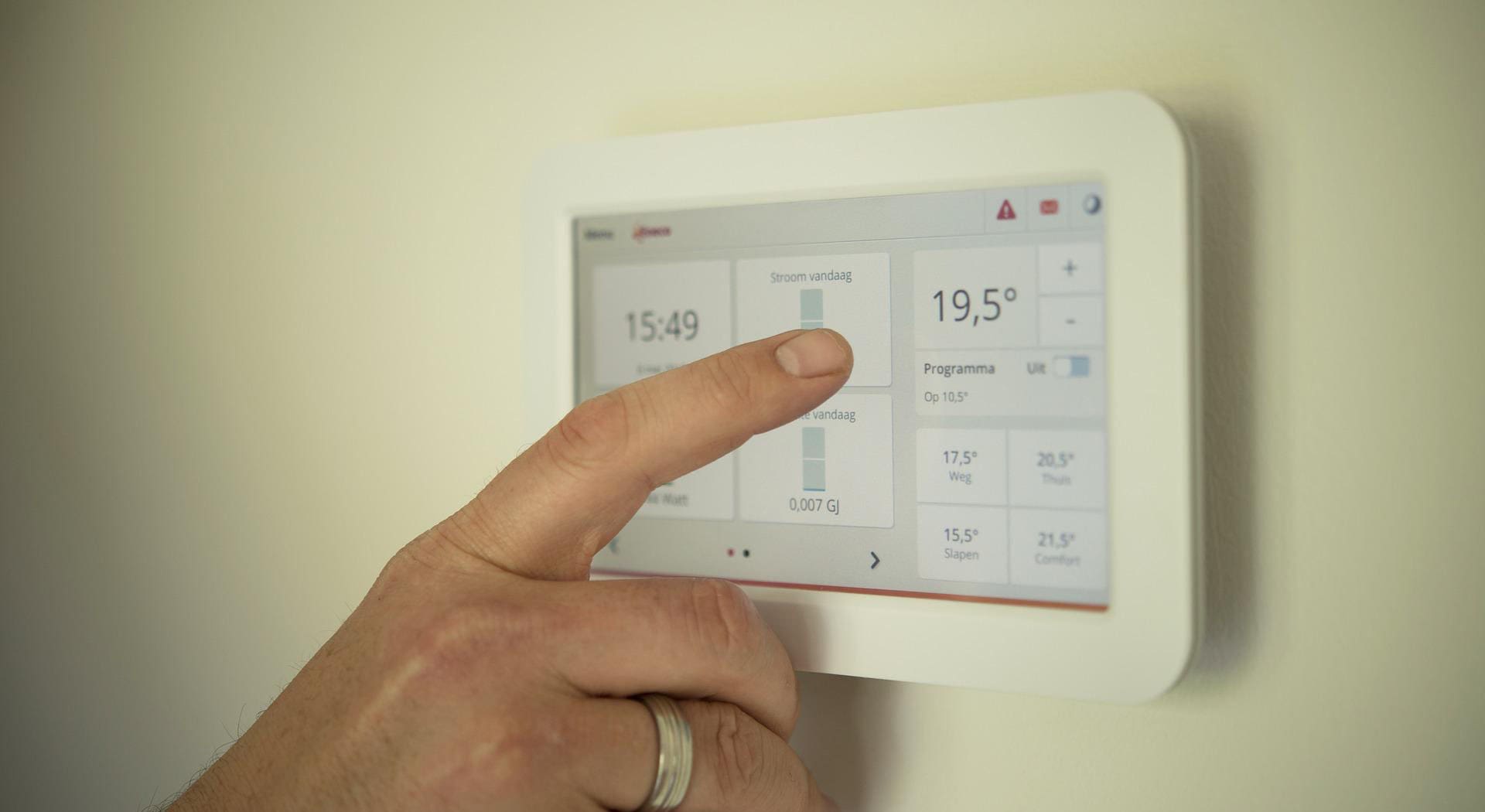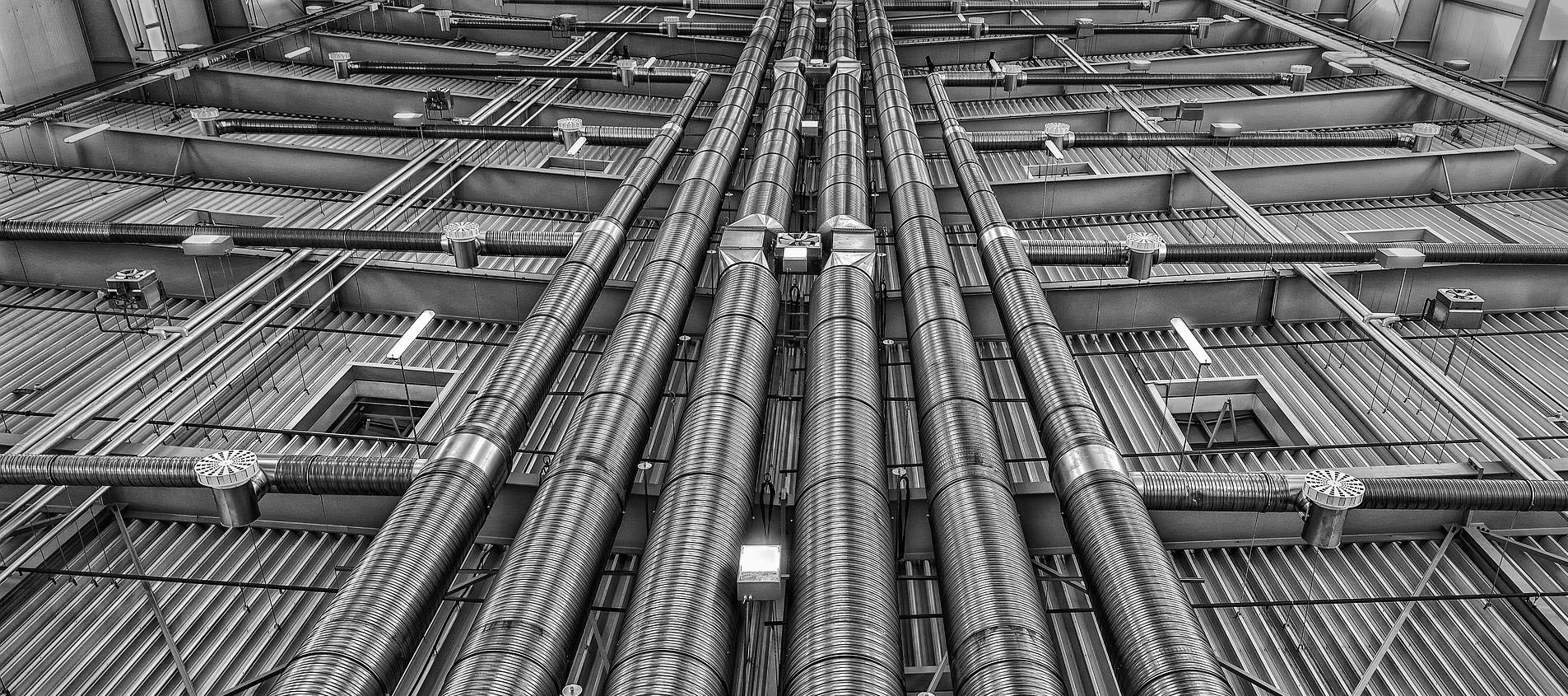Commercial building HVAC (heating, ventilation, and air conditioning) systems are mechanical ventilation systems designed to keep occupants warm or cool by maintaining optimal temperatures within working spaces. An HVAC system circulates air and regulates an area’s temperature and humidity to maintain a comfortable healthy environment.
There are different types of HVAC systems for commercial buildings, but understanding how these types of heating and cooling systems work is paramount to choosing the right one. The efficiency and reliability of commercial HVAC systems play a pivotal role in the sustainability and operational cost-effectiveness of commercial buildings. The decision of which commercial HVAC system you go with will depend on factors such as air quality, energy efficiency, climate conditions, the layout of a building, and budget.
In this guide to the types of commercial HVAC systems, we’ll make it simpler to choose the right one for your commercial property.
To begin with, let’s start with an overview of how commercial HVAC systems work, and the integral components that power the heating and cooling process.

A HVAC system is a that controls the distribution and modulation of cool and warm air. Wondering how HVAC systems work? Here are three essential stages:
Creation or Transfer of Heat
Commercial building HVAC systems are designed to create or move air. Heat is either created by a furnace that generates heat through burning fuel, or a heat pump that transfers heat between the indoors and outdoors. On cold days, warm air is circulated indoors. On warmer days, the system performs this process differently by expelling warm air from inside a room to outside of it.
Air Distribution
The distribution system of commercial HVAC systems ensures optimal indoor air quality and temperature with the movement of the temperature-adjusted cold or hot air through the distribution system. In general, a distribution system consists of blower fans that eliminate air, ducts that transport the air, and valves that control airflow.
Regulation
Temperature settings are regulated by programmable devices such as thermostats and complex direct digital controls. Thermostats can be manually controlled to modulate cooling and airflow functions through simple settings.
Direct digital controls rely on a central operating system of sensors that regulate temperatures based on real-time readings. Direct digital controls can be monitored, updated, and controlled by staff through a computer. This allows greater control of an HVAC system in temperature-sensitive locations such as commercial buildings with a large network of servers, factories with manufacturing units, and the like.

Commercial building HVAC systems contain several critical parts that come together as a whole to ensure everything is working seamlessly. The compressor is regarded as the most important part of commercial building HVAC systems but when it malfunctions, it means other parts of a unit have also been compromised.
Let’s check out what the main components of commercial HVAC systems are in the coming sections.
Compressor
Cooling starts in the main component of an HVAC system, the compressor. This process relies on a chemical medium known as a refrigerant that constantly changes between a liquid and a gas as it absorbs and releases heat during the cooling process. In order to regulate temperature, the compressor serves as a pump that circulates the refrigerant through concealed connections between the evaporator and condenser coils. The compressor’s motors agitate the refrigerant to raise its pressure and temperature before the hot refrigerant is passed through the condenser.
This looped process is vital to ensure optimal thermal comfort within indoor spaces such as commercial, residential, and industrial buildings.
Condenser
A condenser is the outdoor portion of an air conditioner that expels heat when an air conditioning unit is turned on. In the realm of commercial building hvac systems, the condenser plays a pivotal role by facilitating the movement of hot air from the interior to the exterior, thus expelling heat through its pipes and coils. As a heat exchanger, the condenser is responsible for condensing gaseous refrigerant into liquid during the cooling phase.
Air Conditioner
Commercial AC units dehumidify air and eliminate heat to transfer and circulate cool air in indoor spaces. An air conditioner works by drawing heat from outside a building and redirecting cool air inside. It relies on other parts to function normally.
Thermostat
A thermostat controls an HVAC system by regulating the production of warm or cool air, depending on temperature readings. A thermostat’s heating and cooling functionality rely on a sensor that signals when an air conditioner or a heating system needs to be turned on or off.
Air Handler
Within hvac systems in commercial buildings, air handlers play a crucial role in circulating air throughout the system, connected directly to the ductwork. They contain blowers that help circulate cool or hot air within a building. Air handlers include other components such as racks, dampers, sound attenuators, and chambers that work in tandem to ensure optimal temperatures.
Thermal Expansion Valve
This important component allows an air conditioner to successfully draw heat from inside a room and move it outside. For this to happen, the valve removes pressure from the refrigerant, cooling it down rapidly before converting it into cold gas.
An expansion valve doesn’t eliminate heat but removes built-up pressure to effectively lower the temperature of the refrigerant. When it exits the valve, the refrigerant is in its coldest state. It then moves through the evaporator coil of an air conditioning unit, and when it encounters warm air it successfully lowers the temperature of the air.
Terminal Unit
Terminal units control how much air an AC unit circulates within a building. These units mainly rely on blowers, coils, and a filter.
A terminal unit’s main job is to eliminate pollen, dirt, dust, and other contaminants to maintain good air quality. As filters accumulate contaminants, they will need to be cleaned or replaced regularly to ensure optimal air quality.
Furnace
A furnace works differently from an air conditioning unit by warming up a room when a thermostat signals it to initiate the heating process. To generate heat, a gas valve first ignites the burner. Heat is converted into hot air once it goes through a heat exchanger. Lastly, the hot air is circulated by a motor and fan and pushed through the ductwork and into a blower before it’s expelled into a room.
When it comes to maintaining a comfortable and efficient environment in commercial spaces, the choice of building HVAC systems plays a pivotal role. Commercial HVAC systems are engineered to meet the unique demands of larger spaces such as offices, retail stores, and other types of commercial buildings. Understanding the different types of commercial building HVAC systems is crucial for business owners, facility managers, and developers to make informed decisions that align with their specific needs. Below, we delve into the various HVAC systems in commercial buildings, exploring the features, benefits, and suitable applications of each type. From the basic single split-systems to the more complex VRF and VRV systems, we cover a comprehensive range of solutions that cater to diverse requirements and scales of commercial establishments.
Selecting the right commercial HVAC system depends on several factors, including the size of the space, the specific heating and cooling needs, energy efficiency goals, and budget constraints. It’s also important to consider the long-term operational costs associated with different types of commercial HVAC systems. Consulting with HVAC professionals can help in making an informed decision that ensures comfort, efficiency, and sustainability in your commercial space.
By exploring the range of commercial building HVAC systems available, business owners and facility managers can better understand their options and choose a system that best meets their needs, ensuring optimal performance and energy efficiency in their commercial spaces.
So whether you are installing a new commercial HVAC system or upgrading an existing one, this guide aims to provide valuable insights into the commercial building HVAC systems, ensuring optimal performance and energy efficiency in your commercial space.

Now, let’s look at commercial HVAC system types and appropriate models for different buildings.
Rooftop Unit HVAC
Rooftop units (RTUs) are self-contained by design and are generally used for small commercial buildings. They’re connected to a building’s ductwork, providing adaptable heating and cooling to specific parts of a building. RTUs are designed to withstand outdoor elements such as snow, wind, rain, and sunshine.
RTUs have compressors, evaporators, blowers, and condensers. This kind of HVAC system is designed to produce hot or cool air, or both. Circulating metal sheets push air through a filter, then through coils that either heat or cool the air. As the desired air temperature is generated, it is blown by a fan into the duct system.
Ideal for: Flat-roofed buildings with a maximum of 10 floors
Packaged Systems
These all-in-one units have a condenser, compressor, fan coil, and evaporator. Packaged systems can be controlled directly through a thermostat and are often window-mounted in hospitals, sports facilities, hotels, schools, and condos. For these to work, heat pumps in commercial buildings draw air from the outside to the inside on cooler days and vice versa on hot days.
Ideal for: Spaces where occupants can directly control the temperature of a room
Single Split-Systems
Single split-systems are one of the most common types of commercial HVAC systems, offering a simple solution for heating and cooling separate spaces. The distinct advantage of single split-systems is their affordability and flexibility. They are cost-effective because each unit operates independently, meaning if one unit fails, the others continue functioning. This type of commercial HVAC system typically includes an air conditioner to cool the refrigerant, a furnace, and a duct system to distribute the air.
Ideal for: Small commercial buildings and individual offices.
Multiple Split-Systems
Multiple split-systems are an evolution of the single split-system, with a commercial HVAC system that connects multiple indoor units to a single outdoor unit, making them more efficient than having multiple outdoor units. This setup is ideal for medium-sized commercial spaces like larger offices, restaurants, or retail stores. Multiple split-systems offer the advantage of heating and cooling different rooms at different temperatures, providing a tailored solution to meet diverse climate control needs within a building.
Ideal for: Commercial buildings with medium-sized commercial space or those requiring a higher level of climate control
VRF and VRV Systems
Variable Refrigerant Flow (VRF) and Variable Refrigerant Volume (VRV) systems represent the cutting-edge in commercial HVAC technology. These systems provide highly efficient heating and cooling by circulating only the minimum amount of refrigerant needed at any one time, allowing for individual climate control of different zones in a building. The key difference between VRF and VRV is branding; VRV is a specific type of VRF technology developed and patented by Daikin. Both systems offer exceptional energy efficiency, reduced operational costs, and a smaller environmental footprint.
Ideal for: Larger commercial spaces like hotels, large office buildings, and mixed-use facilities
Edison Parker is a reliable and sought-after provider of commercial building HVAC systems in the NY/NJ tri-state area. We have our own in-house team of commercial HVAC contractors to ensure that customers receive consistent quality services. We also stand out for our comprehensive HVAC repair services, offering swift, expert solutions to HVAC performance issues.
Edison Parker caters to large-scale industrial establishments such as hotels, nursing homes, malls, and recreational centers. Our services include the installation and maintenance of new and existing HVAC systems as well as the replacement of its mechanical parts and units. Our expertise encompasses commercial HVAC installation for complexes and buildings that require elaborate HVAC systems.
Our highly trained and knowledgeable team has extensive experience in meeting our clients’ stringent requirements for commercial HVAC systems. Just give us a call for commercial building HVAC systems services, maintenance, and repair requests.
The commercial HVAC cost of installation can fall anywhere between $6,000 and $30,000 or more. Factors such as the layout, type, and size of the commercial buildings will influence installation cost. On average, the commercial HVAC cost per sq ft can fall between $15 and $30 for recreational and office buildings.
HVAC systems that regularly receive commercial HVAC repairs and maintenance will last longer than systems that don’t. Depending on usage and brand, an HVAC system can last anywhere between 15 and 25 years. It’s thus wise to get regular maintenance checks from a trusted commercial HVAC contractor to prolong your HVAC system’s longevity.